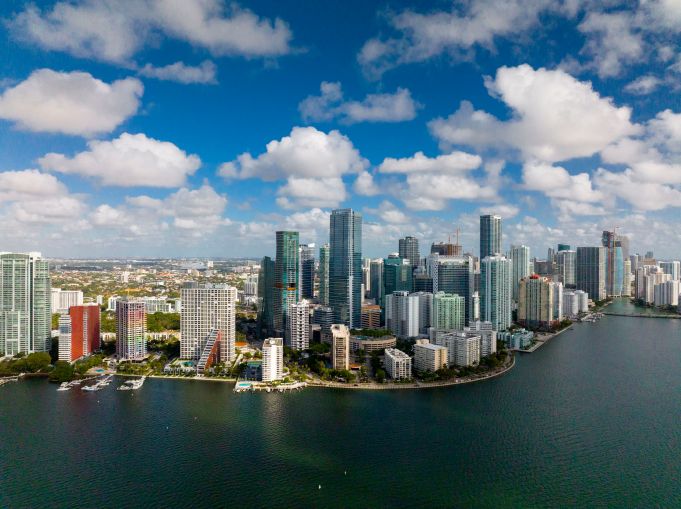Stay in the City: Top CRE Executives Make the Case for Commuting at McKinsey Forum
RXR’s Scott Rechler and KKR’s Ralph Rosenberg emphasize cities will still thrive in the future
By Brian Pascus July 13, 2023 3:25 pm
reprints
Some of the biggest names in real estate aren’t ready to give up on big cities yet.
Hours after McKinsey Global Institute issued a new study that was highly critical of the future viability of some of the world’s largest cities amid persistent hybrid work patterns, four top commercial real estate executives joined the consulting firm at a forum to offer a more optimistic take.
The four executives — Diane Hoskins, co-CEO of Gensler; Stuart Mercier, a managing director of real estate at Brookfield (BN) and country head for China; Scott Rechler, chairman and CEO of RXR Realty; and Ralph Rosenberg, global head of real estate at KKR (KKR) — all participated in a McKinsey forum Thursday that examined the findings of the report. All four offered their boots-on-the-ground analysis of how hybrid work has impacted the commercial real estate industry.
“The projections into the future don’t represent a preordained destiny,” said Mercier. “This is an opportunity for us to think about how we adapt to the urban core and urban environment and the working experience to earn the commute.”
The McKinsey report titled “Empty Spaces and Hybrid Places: The Pandemic’s Lasting Impact on Real Estate,” concluded that hybrid work is permanent, suburbs are booming, demand for retail and office space in urban cores could fall by nearly 40 percent its 2019 levels within a few years, and in the future global cities must create multi-use buildings and mixed-use neighborhoods if they are to remain viable to employees.
The report surveyed more than 12,000 employees and consumers in nine of the largest global cities: New York, San Francisco, Paris, London, Houston, Munich, Tokyo, Beijing and Shanghai.
“I don’t think it’s inevitable that the cities identified in this report will end up where this report suggests they end up,” said Rosenberg. “Public policy and how governments respond to creating urban cores that are vibrant and have a reason to exist will be super important.”
Hoskins did note, however, that the Gensler Research Institute had conducted workplace research of over 1 million respondents going back to 2008 that showed work-from-home patterns had been increasing for nearly a decade even prior to the COVID-19 pandemic that began in March 2020.
She said research confirmed that single-use office buildings have contributed to the exodus of workers commuting into the city to work, and that it is an “enduring trend.”
“The pandemic was an accelerant,” she said. “I’m not surprised by the findings at all. In many ways, I’ve seen similar research.”
But Rechler pushed back on the research and noted that even if some residents are moving to the suburbs from cities, many of the world’s largest global cities, specifically in the United States, are instead creating “superstar regions” connected by public transit and highway networks that feed economic activity into various parts of the larger network.
“I think the superstar cities that are going to be the successful ones in the future are ones that are part of superstar regions that have connectivity to the outer ring around that city and are integrated together,” said Rechler.
“[There are] cities like New York, where you have 8 million people in New York City, but if you think of the greater New York region, there are 22 million people connected by public transit,” he continued. “You’re starting to see that in places like Miami, Florida and places like Phoenix, where that outer region is growing, and you have leadership investing in that infrastructure so it’s connected as a superstar region and thought of as one.”
Rosenberg echoed this point and noted that those cities that integrate the workplace and residencies with respect to proximity to transportation and extracurriculars like bars, restaurants, professional sports teams and museums will remain enduringly popular with younger generations seeking social connectivity and culture.
“I do not believe, from a human nature perspective, that my 28-, 26-, 25- and 22-year-old children are going to raise their hand and move to Greenwich, Connecticut, anytime soon,” Rosenberg said. “If you took this report at face value, you might not have concluded that the four of them ended up back in New York City.”
To that end, Mercier noted that an element of luck and chance and destiny will make working from an office appealing to younger workers now and in the future, as important meetings, chance occurrences and interpersonal relationships can’t be reproduced on a video call or through email.
“For the young intern, the young manager, who is in the organization, their career — and if we think back on our own — has really involved a number of chance meetings, chance conversations, moments of luck, and many of those occurred in person,” explained Mercier, who emphasized the number of days most workers are coming into the office is not zero. (The study found the average to be 3.5 days per week.)
“It’s a reflection that [the office] will play a critically important role in broad economic activity and individual careers going forward,” he said. “It’s incumbent upon us to create a spectacular ecosystem that continues to manifest itself for those opportunities.”
Brian Pascus can be reached at bpascus@commercialobserver.com


